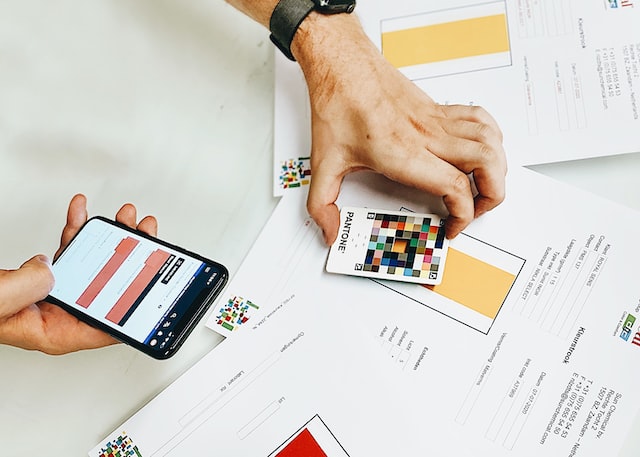Pantone is a standardized color matching system that is used in graphic design, printing, and various other industries. It was created by Lawrence Herbert in the 1960s, and it has since become an essential tool for designers and printers around the world. In this article, we will discuss the importance of Pantone in graphic design and how it helps designers to create accurate and consistent color palettes.
What is Pantone?
Pantone is a color matching system that provides a standardized method for identifying, matching, and communicating colors across a range of industries. It was created by the Pantone company, which produces color swatch books, software, and other tools that help designers and printers work with color more effectively.
The Pantone system uses a set of standardized color swatches that are numbered and labeled with their specific color values. This allows designers and printers to communicate specific colors accurately and consistently, regardless of the medium or printing process.
The Importance of Pantone in Graphic Design
In graphic design, color is one of the most important elements. It can convey mood, emotion, and meaning, and it can make or break the success of a design. The Pantone system is crucial to graphic design because it allows designers to work with color more effectively and to communicate their design ideas accurately.
Here are some of the key reasons why Pantone is so important in graphic design:
Consistency
One of the primary benefits of using Pantone colors is that they provide a consistent and reliable method for matching and communicating colors. This is particularly important for businesses and organizations that need to maintain consistent branding across different media and platforms.
For example, a company might use a specific shade of blue in their logo and branding materials. By using the Pantone system, designers and printers can ensure that this color is reproduced accurately and consistently across all of the company’s marketing materials, including brochures, business cards, and advertisements.
Accuracy
Another key benefit of using Pantone colors is that they provide a high level of accuracy when it comes to matching and reproducing colors. This is especially important in industries like printing, where color accuracy is critical to the success of a project.
Pantone colors are created using precise formulations that are based on specific pigments and inks. This means that designers and printers can be confident that the colors they are using will be reproduced accurately, even when printed on different materials or with different printing processes.
Flexibility
Despite the standardized nature of the Pantone system, it still offers a great deal of flexibility when it comes to working with color. Designers can choose from a wide range of colors and shades, and they can create custom colors by mixing different Pantone colors together.
This flexibility is particularly useful when working with clients who have specific color preferences or branding guidelines. Designers can use the Pantone system to create a custom color palette that meets the client’s needs while still maintaining consistency and accuracy.
Communication
Finally, the Pantone system is an essential tool for communication between designers, printers, and clients. By using Pantone colors, designers can communicate their design ideas more effectively, and they can ensure that their vision is accurately translated into the final product.
For example, if a designer is working on a logo for a client, they can provide the client with a Pantone color swatch that represents the specific shade of blue they plan to use. This allows the client to see exactly what the color will look like in the final product and to provide feedback or make adjustments as needed.
Conclusion
In conclusion, Pantone is an essential tool for graphic designers, printers, and various other industries that rely on accurate and consistent color reproduction. By providing a standardized system for identifying and matching colors, Pantone helps designers to create effective and meaningful designs that accurately communicate their intended colors. The importance of Pantone in graphic design lies in its ability to provide consistency, accuracy, flexibility, and communication in the use of color.
